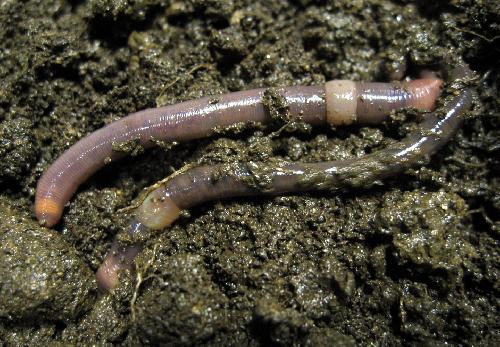Despite the abundance of earthworms in soils all around the world, there is a lack of information concerning the geographical distribution of many lumbricid species. Researchers from eight European countries have collected information on earthworm communities to map the biodiversity of these invertebrates and to put soil conservation on the political agenda.
Even though we cannot see them, there are numerous, unevenly distributed organisms which are living in the top most layer of the Earth's crust. The soil, considered a "forgotten resource", is home to more than a quarter of our planet's biodiversity. One single gram of healthy soil contains millions of organisms, one of the reasons why 2015 was named the International Year of Soils.
"In 2015, several initiatives were organised with the aim of bringing some justice to this system (edaphic environments) that we step on every day and feed on, and that makes it possible for the forests, meadows and crop fields, among others, to function properly," says María Jesús Briones to SINC, a researcher at the University of Vigo and one of the authors of a study that, for the first time, gathered information on the biodiversity of one of the groups of terrestrial invertebrates that has a significant impact on soils: the Lumbricidae, or earthworms.
 The presence and role of earthworm in the ecosystem greatly enhance the quality of the soils where they live. Credit: María Jesús Briones
The presence and role of earthworm in the ecosystem greatly enhance the quality of the soils where they live. Credit: María Jesús Briones
During the study, published in the journal Applied Soil Ecology, scientists from eight different countries, including Spain, created the first large-scale European map of earthworm abundance and diversity in addition to distribution maps of widespread species such as Aporrectodea caliginosa and Lumbricus terrestris.
In recent years, "the classification of edaphic invertebrates and their distribution patterns have not received priority for funding, meaning that a lot of information from unpublished studies has not been digitised," states the researcher regretfully. In addition, these animals -affected by the use of soils- were not well documented in the records, but their presence and role in the ecosystem greatly enhance the quality of the soils where they live.
In total, the research team analysed earthworm records from 3,838 locations from eight European countries, and the results were modelled in order to compare them to the rest of the continent. With regard to the rest of the world outside of Europe, however, "there is not enough quantitative data concerning the properties of soil to be able to make accurate estimations," stresses Briones.
Completing the map in Spain
France, Ireland and Germany were the top countries to gather information regarding the biodiversity of these invertebrates -France collected data from 1,423 locations- thanks to access to substantial funding to study the entire territory. On the other hand, there is still a lot to be done in Spain.
In fact, the records from Spain focus on approximately one third of the country's territory: this study included earthworm data from 63 sites representing four provinces in northwestern Spain (Asturias, Leon, Zamora and Salamanca). According to the expert, "the urgency now is to gather more data in order to validate the data we already have".
For this reason, the researcher is currently overseeing a project to collect more data. Specifically, "we are digitising the data from Galicia to complete the northwestern Iberian Peninsula," highlights Briones, who included data from her thesis in this study. The ultimate objective is to make further contributions, even from Portugal and Italy, to obtain detailed maps of the diversity and abundance of the European earthworm.
"The study is the first step to creating a database of European earthworms, which needs to be improved on," point out the authors. Given its environmental importance -being a reflection of the quality of their habitat-, the study strives for a better understanding of these invertebrate communities in addition to improved monitoring.
"We hope that studies such as this one put a greater weight on the need to understand the diversity of these invertebrates that are so important to the proper functioning of soils," concludes Briones who is involved in another initiative called Global Soil Biodiversity Atlas which will soon be published.
source: FECYT - Spanish Foundation for Science and Technology